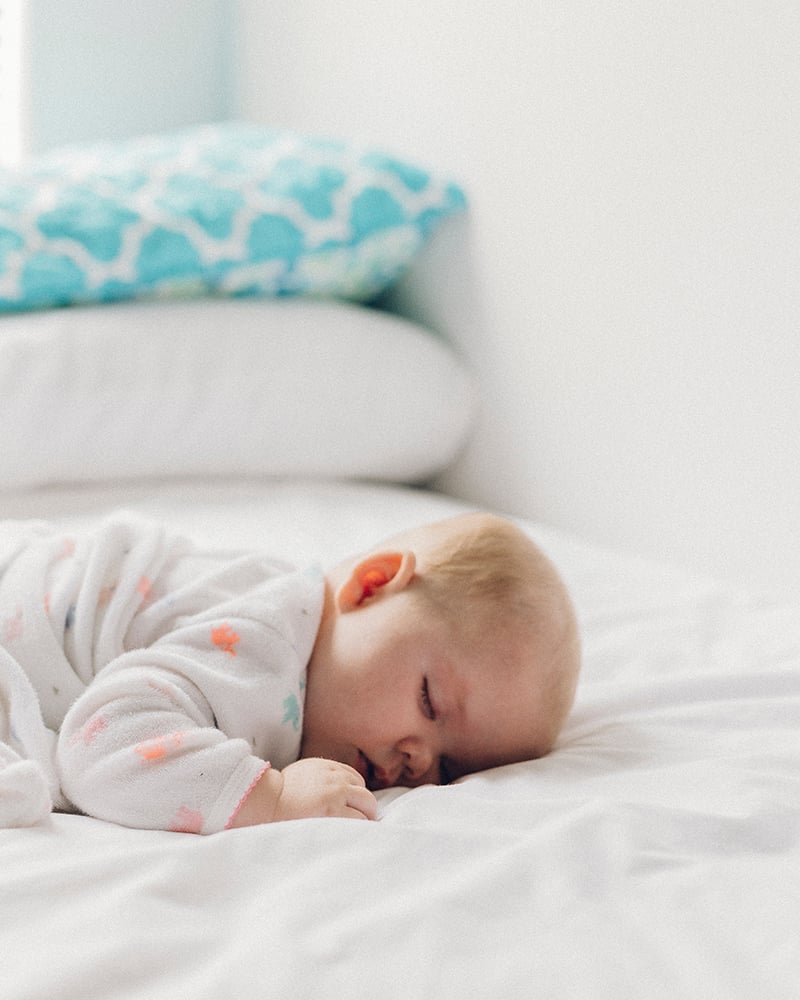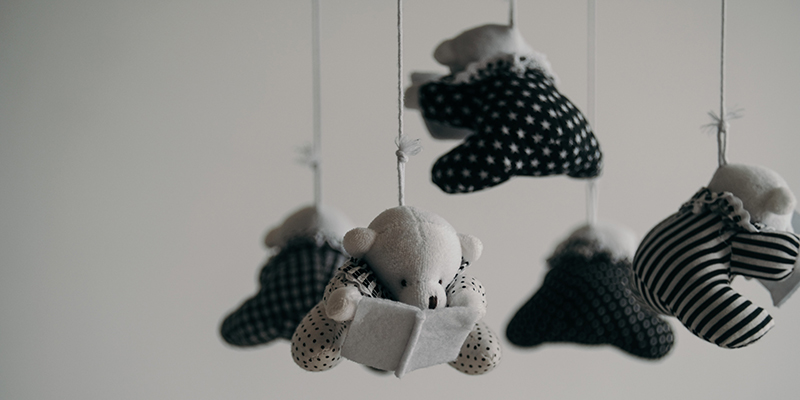After weeks of sleepless nights you finally feel like you’ve managed to achieve some sort of routine, but then sleep regression sweeps in out of nowhere and you’re back to square one.
Broken sleep isn’t good for you or the little one but just like with the newborn period, you will get through this. To help you along the way, we have asked Cecile De Scally, the Baby Whisper at Malaak, to share her tips.
“Putting our baby down and using the ‘hands on’ technique is a parent-dependent tool, to assist the baby to sleep out of our arms,” she explains. “The amount of time we suggest is 20 minutes and if the baby is not asleep in that 20 minutes, pick them up and rock to sleep and in a very small baby even feed to sleep.”
“Most babies do not cry very much in the 20 minutes, they will cry as this is their way of destressing, and this is not harmful to them at all,” she continues. “If your baby has achieved sleep and wakes, do not leave them to cry. Attend, put a hand on and see if they settle.”
“If they do not settle, pick them up. A baby crying is generally saying that one of my cues is not being met, (warm, dry, fed, the right bed, position, with the right smells/sounds/lights). We need to meet these cues, so the baby achieves sleep and helps them stay asleep.”
De Scally further explains why regression is part of child development and shares a few tips on what you can do to ease those difficult moments.

Why do babies regress?
There are multiple reasons with one of the most common being, calories. We only suggest starting babies on solids, at six months, unless there are other reasons and these should be discussed individually. It is a myth that formula or solids will make your baby sleep better.
However, calories are really important. Around four months a lot of mothers will want to go back to exercising and dieting which may then limit the baby’s calorie intake. In a bottle-feeding baby, we often do not understand what they require and because we are concerned about over-feeding, we may limit the intake.
The second reason for the regression is simply maturity, are you understanding the changes in your baby’s ability to be awake longer. This is a concept that I have termed, HAT – Happy Awake Time. This is the amount of time your little one can be happily awake including feeds before they need to go back to sleep. The amount of time is age dependent; at 0-6 weeks this is normally around 60 minutes, of which most is feeding. Six weeks to four months of age, HAT, is an average of 90 minutes. It is very cue dependent, watching your baby for their unique cues.
It is this recognising your babies changes that seems to be the most difficult, understanding how long they can be awake as a unique individual, the calorie needs, and ensuring good habits which allow your little one to self soothe.
Another common reason for regression at four months is your little one starting to understand who people are, we travel to visit our families, our families travel to visit us. Your little one likes being sociable, and the attention they receive is enjoyable so they begin to miss their families when they’re not around. If you have a partner that travels for work, this can be upsetting until your little one adapts and realises that they come back.
View this post on Instagram
Pre-bedtime
EsDe Scally suggests to feed about an hour later bath or prepare for bed, feed again and place baby drowsy to sleep.
Dreamfeed
This is three to four hours after bedtime, feed, changing diaper which is a must, this arouses the baby enough to take a bigger volume, feed again and here your baby may be placed in bed asleep.
Shrinking feed
The next wake up is referred to as the shrinking feed. This we hope to have limited or even stopped by three months.
Preparation is key
Achieving sleep, in a small baby up to 6 months is by using hands on. With this technique you need to ensure your baby is swaddled, placed in bed drowsy, or aware, using white noise and a hand on them to rock a pat while they achieve sleep, this will take around 20 minutes.
How much sleep does a baby need?
At night they do need 12 hours which will include possibly 1-2 feeds and in the very young baby maybe more. Day sleep up to six months is a rough average of four hours plus, baby dependant, split into three to four sleeps.
Cecile’s top tips for helping your four-month-old through a regression:
- Create a healthy eating pattern, ensuring your little one’s calorie needs are met.
- Ensure a consistent bedtime pattern, your little one likes predictability.
- Using white noise especially a tool that activates with your baby crying can be very helpful, in assisting your little one in re-achieving sleep. We love the Skip Hop soother. This soft bedtime friend features an innovative cry-activated sensor that distinguishes between cries and other sounds, so baby and parents get a good night’s sleep. Shop here
- At four months of age you can introduce what is referred to as a snuggle toy into their routine. The Jellycat toys are super soft and cute – Shop here
- Do not try to stop the dreamfeed, your little one will decide if it is needed.
- With starting hands on early with your little one, you will be already doing a lot less and can be taking one arm out of your swaddle, as they will now be starting to roll. If you like swaddles, we highly rate Anais & Aden swaddles of the amazing Lovetodream sleep suits.
- Playing peekaboo is a useful tool for reassuring your little one that when you disappear you generally come back.
– For more about Dubai’s lifestyle, news and fashion scene follow Emirates Woman on Facebook and Instagram
Images: Unsplash, Instagram












